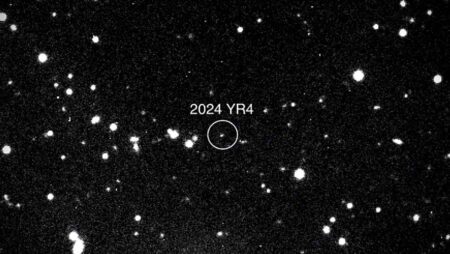In September, China unveiled a conceptual plan for its first mission to defend against a near-Earth asteroid. The mission aims to observe an asteroid and then hit it with a spacecraft to alter its path in around 2030, according to state media.
China is also part of the International Asteroid Warning Network (IAWN) and the Space Mission Planning Advisory Group (SMPAG), two international bodies that coordinate the sharing of information and response to asteroids and other near-Earth objects.
The 2024 YR4 asteroid is big enough to cause localised damage in the event of an impact with Earth.
Li said that while the asteroid was likely to either fall into the ocean or disintegrate as it entered the Earth’s atmosphere, if it did hit land the shock waves and radiation generated could destroy a medium-sized city.
In 2013, an asteroid measuring 20m wide hit Chelyabinsk, Russia, with an explosion equivalent to 30 atomic bombs. It damaged 300 houses and injured 1,500 people.
Li said that if the 2024 YR4 asteroid hit an urban area, it could injure tens of thousands of people.
At the end of January, NASA and the ESA both released independent estimates saying the probability of an impact with Earth was above 1 per cent. Those odds, along with the size of the asteroid, put it above the threshold for IAWN and SMPAG to initiate a response.
In their estimate released late last month, the ESA put the likelihood of impact at 1.2 per cent. The probability could continue to change – and even fall to zero – as scientists observe and obtain more data on the asteroid.
Li said that although public attention was focused on the asteroid, “scientists actually do not regard it as a particularly serious matter and are relatively calm”.
The asteroid, which passed close to Earth in December as it made its four-year trip around the sun, will fade out of view over the next few months, so astronomers will use increasingly powerful telescopes to obtain as much data on it as possible while it is still visible.
“By the end of the observation in April, we will have more data, and when the new observation window arrives in 2028, we will be able to judge the probability of it hitting the Earth more clearly,” Li said.
“At that time, the United Nations will organise another discussion to decide whether to design a defence plan.”
This article was first published on SCMP.
https://www.channelnewsasia.com/east-asia/asteroid-2024-yr4-china-builds-planetary-defence-team-4932596



